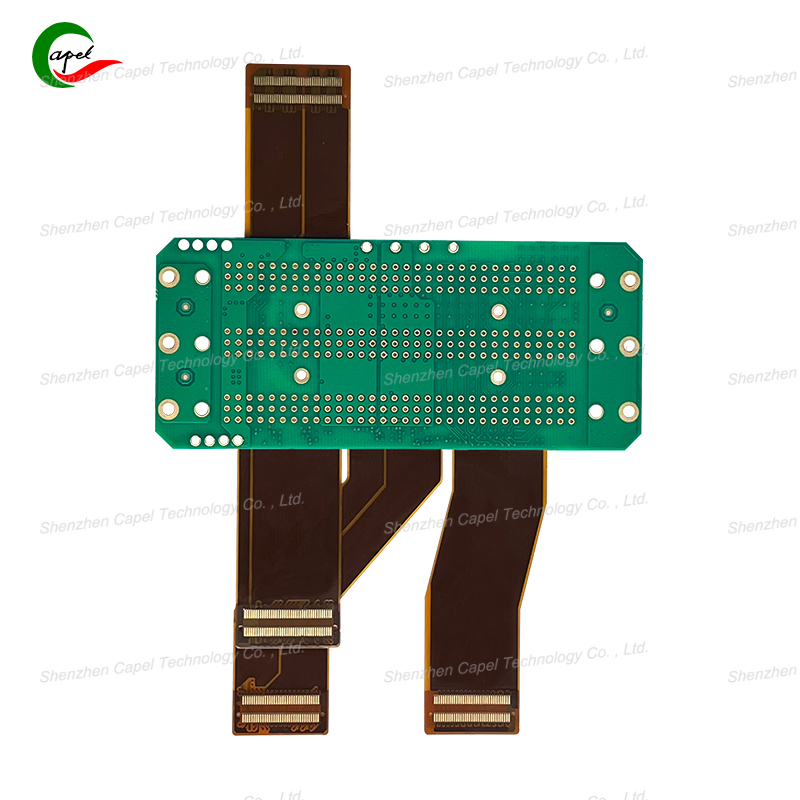Date: 2025-10-13
Here's something I've learned the hard way after twenty years in PCB fabrication: the order you laminate your rigid and flex sections isn't just a theoretical preference—it directly determines whether your boards will survive in the field or come back with delamination issues.
Let me break down what actually works on the production floor, beyond what the textbooks say.
Walk through any experienced rigid-flex shop, and you'll see most teams building the rigid core first. Here's why this approach has become our standard:
The rigid FR-4 materials need to be cooked at higher temperatures—we're typically looking at 175-190°C with pressure around 1.0 MPa. This creates a solid foundation that won't move around during subsequent process steps.
Once that rigid core is locked in, adding the flex layers becomes much more straightforward. We can drop the temperature down to 160-170°C and reduce pressure to around 0.4 MPa. The flexible polyimide materials handle these milder conditions beautifully without shrinking or warping.
I've seen the difference this makes under the microscope. The bond line between rigid and flex sections appears clean and uniform when we build this way. There are no stress zones where the materials are fighting each other.
Yes, occasionally we'll try laminating the flexible layers first. This usually happens when we're dealing with an extremely simple single-layer flex design where someone's trying to save a few manufacturing steps.
The problem is what happens next. When we later hit that pre-laminated flex material with the high heat and pressure needed for the rigid sections, the flex often moves. Sometimes it's subtle—just a few thousandths of an inch of shrinkage. But that's enough to create micro-gaps at the interface that become failure points down the road.
Just last month, we had a customer return a batch of simple sensor boards made with flex-first lamination. They'd failed thermal cycling tests, with clear delamination starting at the rigid-flex junctions. We re-ran the boards rigid-first, and the problem disappeared.
The lamination order gets all the attention, but these practical details are what separate reliable boards from problematic ones:
Surface preparation is everything. We've stopped assuming surfaces are clean straight from storage. Our team now wipes every layer with IPA right before lamination. The difference in bond quality is noticeable—fewer voids at the interfaces and much more consistent results.
Adhesive selection can't be an afterthought. We learned this lesson with an early automotive project. The epoxy that worked perfectly for rigid-to-rigid bonding created brittle failures at the rigid-flex interfaces. Now we use specialized acrylic adhesives specifically formulated for bonding different material types.
Cooling down too quickly ruins good work. It's tempting to rush batches through the process, but rapid cooling introduces thermal stress between the dissimilar materials. We now enforce a slow cool-down protocol, typically 5-10°C per minute, which has virtually eliminated our warpage issues.
Unless you're building the simplest single-sided rigid-flex boards, start with your rigid layers. The stable foundation they provide makes everything that follows more predictable and reliable.
The flex-first approach might seem appealing for certain simple designs, but in my experience, it introduces more variables than it solves. Combined with proper surface preparation and controlled cooling, the rigid-first method consistently delivers boards that stand up to real-world use.
Remember—good rigid-flex manufacturing isn't about finding shortcuts. It's about understanding how materials behave under process conditions and stacking the odds in your favor.
related link:
Capel manufacturing PCBs since 2009. Professional technology and high-precision Printed Circuit Boards involved in Medical, IOT, UAV, Aviation, Automotive, Aerospace, Industrial Control, Artificial Intelligence, Consumer Electronics etc..